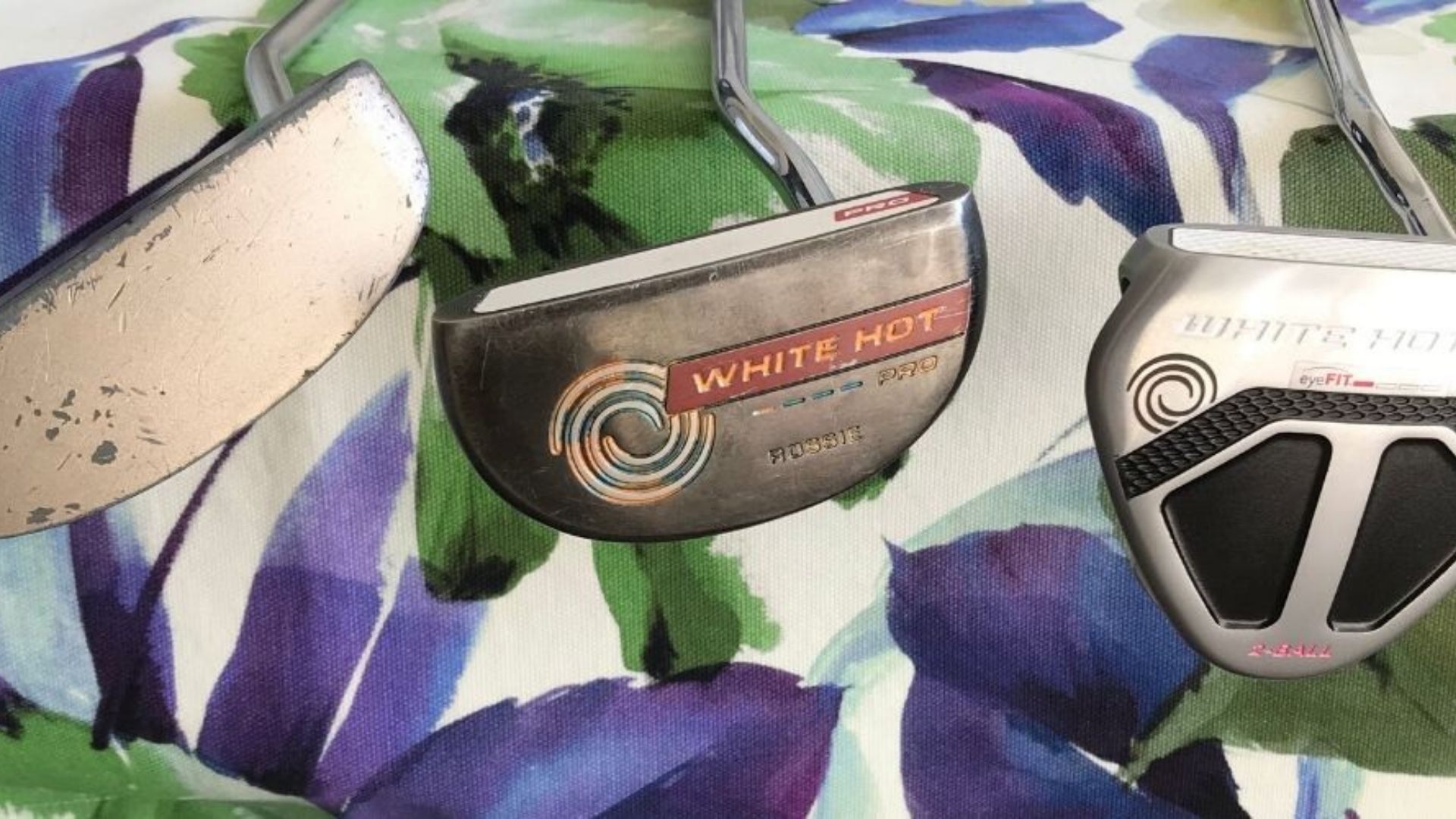Over the years, the types of putters have changed dramatically. Whether it is in terms of material, construction or sheer size. Nowadays, the three main putter categories are Blade, Mid-Mallet and Mallet. At first sight, every beginner would consider the different types of putter by putter head. The putter is always better to have it on our side, it can go from best friend to becoming our biggest fear real quick. For that reason, it is crucial to start off right, and choose the type of putter head that suits you best.
Mallet Putter – Larger shape
Mallet putters are the largest models available under the three categories. This also means that they offer a larger list of possibilities. Elaborate and sophisticated aiming aids are just one of the features used in various mallet putters. Furthermore, mallet putters are characterised by an extremely high inertia value. Due to the large head shape, the weight distributes better, more precisely and improving the targeting, which is why mallet putters provide greater forgiveness in the event of misses.
These models are particularly well suited for golfers who have little to no arc in their putts. Often mallet putters are even “face balanced”. This means that the face points straight up when the putter is at rest. A putter with more toe slope will fall towards the toe, so the face will point to the side when balanced. If you make a big arcing motion when putting, you should take a closer look at blade putters.

The downside is the sheer bulk, which is certainly not to some people’s liking. The look of the mallet putter is too clunky, too big and too unfamiliar if you have been playing with a thin blade putter for years or decades. Furthermore, mallet putters tempt you to want to execute the stroke much too straight. A small bow movement does not spoil the result at all, which is why you should trust your swing.
In summary, mallet putters are particularly suitable for golfers who have problems aiming, who tend to have a straight putting motion, don’t want the putter to twist much during the swing, want more help with misses and prefer a larger head shape.

Blade Putter – Slim head design
Blade putters receive a much simpler design compared to the massive mallet putters. The DNA of the early days of golf is still clearly visible in blade putters. However, this does not mean lack of technological progress in modern blade putters. Inserts or milling improve the hitting surface, weights and hosel design influence the toe hang and materials and aiming aids optimise feel and alignment.
Due to the shape and the resulting weighting, blade putters turn to be the best for golfers who do not shy away from a strong arc movement when putting. Considering all types of putter by putter head, Blade putters are the most slim and simpler to the eye. They are easier to open and close, and therefore resulting the right choice for golfers with a larger arc swing movement.

Off-centre hits show on these type, but they often miss the target. This is due to the smaller and more compact design. It cannot deliver extreme values in terms of forgiveness.
One advantage is the clear, thin and pure look that blade putters bring with them. Normally, these putters also provide a clearer and more precise feel and feedback during the stroke. Because of this, many professionals prefer blade putters. They expect feedback from the club.

Mid-Mallet Putter – Half way through the Mallet Putter head
Mid-mallet putters are a mixture of both worlds. If we compare them to the blade models, they offer a little more space for aiming aids. Also, these have a less pronounced toe slope, a more forgiving shape and a larger footprint.
Due to the slight toe slope that mid-mallet putters usually have, this types of putter by putter head is ideal for golfers with a slight bow motion. Here, the mid-mallet putters rank exactly in the middle between mallet and blade putters.

In other respects, too, mid-mallet models are somewhere between the two extremes. They combine the advantages of blade or mallet putters in equal measure, but have to make sacrifices just the same. There is room for a smaller aiming aid, but again not as much as with a mallet putter. The profile is more compact, but less sleek as the blade putter. You recognise the pattern – it’s just a middle ground.

It is best to look at and test different types of putter by putter head during a fitting. However, last but not least, the feeling, the look and individual preferences play an immensely important role, which should not be disregarded.





















